- About us
- Support the Gallery
- Venue hire
- Publications
- Research library
- Organisation chart
- Employment
- Contact us
- Make a booking
- Onsite programs
- Online programs
- School visit information
- Learning resources
- Little Darlings
- Professional learning
Photo-media artist Anne Zahalka began studying art at East Sydney Technical College before going on to attain her undergraduate degree at Sydney College of the Arts and her Masters at the University of New South Wales. She began exhibiting in the 1980s, developing the first of successive bodies of work that reconfigure familiar images and modes of representation. Her 1987 exhibition Resemblance consisted of a group of contemporary photographic portraits mimicking the conventions of Dutch genre painting, for instance, and Welcome to Sydney (2001) situates sitters from diverse cultural backgrounds in identifiably Sydney suburban settings to question dominant ideas about national identity. The idea of the artist and the myths around 'genius' and the creative process are also ongoing themes in Zahalka's work. Her portraits of visual artists are characterised by a sense of artifice and theatre that parodies the idea of the 'creative genius' while simultaneously evoking the technical, manual work involved in making art. Her 1990 series of portraits of women artists, furthermore, derides the historical tendency to associate creativity and genius with maleness, and to exclude certain types of art practitioner from the 'great artist' narrative.
Gift of Leo Christie 2003. Donated through the Australian Government's Cultural Gifts Program.
© Anne Zahalka/Copyright Agency, 2024
Anne Zahalka’s self-portrait is a colour photograph created in 1990. It measures 70 cm tall by 70 cm wide and is surrounded by a wide white mounting and a simple wooden frame.
In the foreground, thick velvety orange-red curtains part in the middle, revealing an interior scene. The scene is almost a symmetrical mirror image, split vertically down the centre. The photographer has presented herself twice, seated side by side on identical low-slung lounge chairs. A chess board is balanced between the chairs, resting on their arms, and in the background is a large square photograph on a black fabric-covered wall.
Anne on our left wears a black beret over her wavy blond hair with a short fringe. She faces forward, her body angled towards our right, and looks out through narrowed brown eyes. Her red lips are closed, and her left index finger touches her chin. She wears a dark green blazer, open, over a white collared shirt, wide red-brown tie with white polka dots, and a long black skirt.
Anne on our right is in profile, turned to the Anne on the left. She holds an old-fashioned camera at her chest, pointing towards the other Anne. She is dressed in a short-sleeved shirt, black with white polka dots, and a short black skirt.
Both women’s feet, in black lace-up shoes, vanish, as if cut off in the photographic process, into the patterned peach-coloured carpet beneath them.
Behind the chess board perched between the two Annes, a low lamp with a black metallic shade spills light onto the back wall, covered in creased black fabric.
In the centre of the wall hangs a large square glossy photograph, also with a black background. The photograph is of a blond-haired woman dressed in black, holding a small white model aircraft. She sits at a simple desk surrounded by objects including: a pot plant with drooping red flowers, a set of old-fashioned balance scales, a sand hourglass, an open book, and a tripod with an old box camera attached.
Written and voiced by Lucie Shawcross
Anne Zahalka (age 33 in 1990)
Leo Christie (10 portraits)
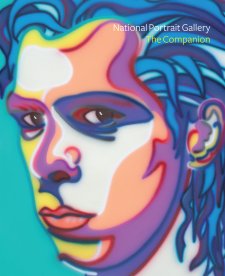
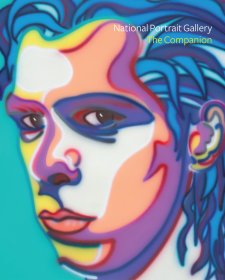

On one level The Companion talks about the most famous and frontline Australians, but on another it tells us about ourselves.
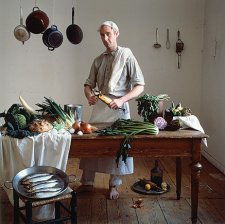
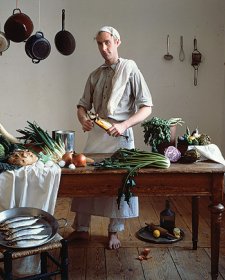
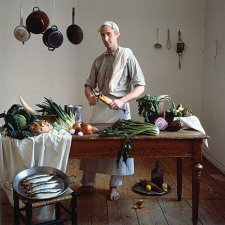
Naomi Cass, Director of the Centre of Contemporary Photography, in conversation with Anne Zahalka.
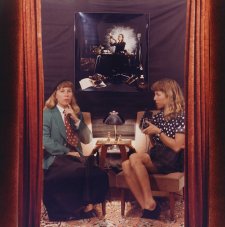
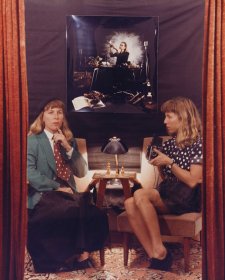
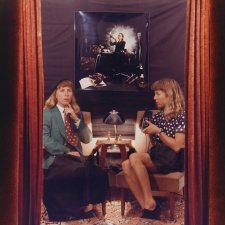
It takes a village to raise a creative! Get an insight into the often-unseen work and supporters needed for the arts to thrive. The work of art documents the creative process, evoke states of creativity and inspiration, and shows us clues about the subject’s own work from the way artists portray them.